
Two radically different images of the Stingray Nebula taken by the Space Telescope. Hubble with a difference of 20 years. The image on the left was taken by Broadband Camera # 2 in March 1996. It shows the central star of the nebula, which is in the last stages of its life. The gas blown in all directions by the dying star looks much brighter than the gas in the image on the right, taken in January 2016 with wide-range camera # 3.
All stars, including our sun, will eventually die someday.

After the Sun has been burning for several billion years, being among the stars of the main sequence, it will expand to a red giant, switch to burning helium, move to the asymptotic branch, and then shed its upper layers. When compressed, the nucleus will begin to heat up, and illuminate the gas of the planetary nebula. In about 20,000 years, this nebula will gradually fade away and eventually become invisible.
Having used up nuclear fuel in the core, sun-like stars will die according to a predictable scenario.

At the end of its life, such a star begins to shed its upper layers into the depths of space, forming a protoplanetary nebula such as the Egg Nebula.on the picture. Its outer layers are not yet warmed up enough by the central collapsing star for a true planetary nebula to appear.
The core shrinks, turning into a white dwarf, which heats up and illuminates the discarded outer layers, creating a planetary nebula.
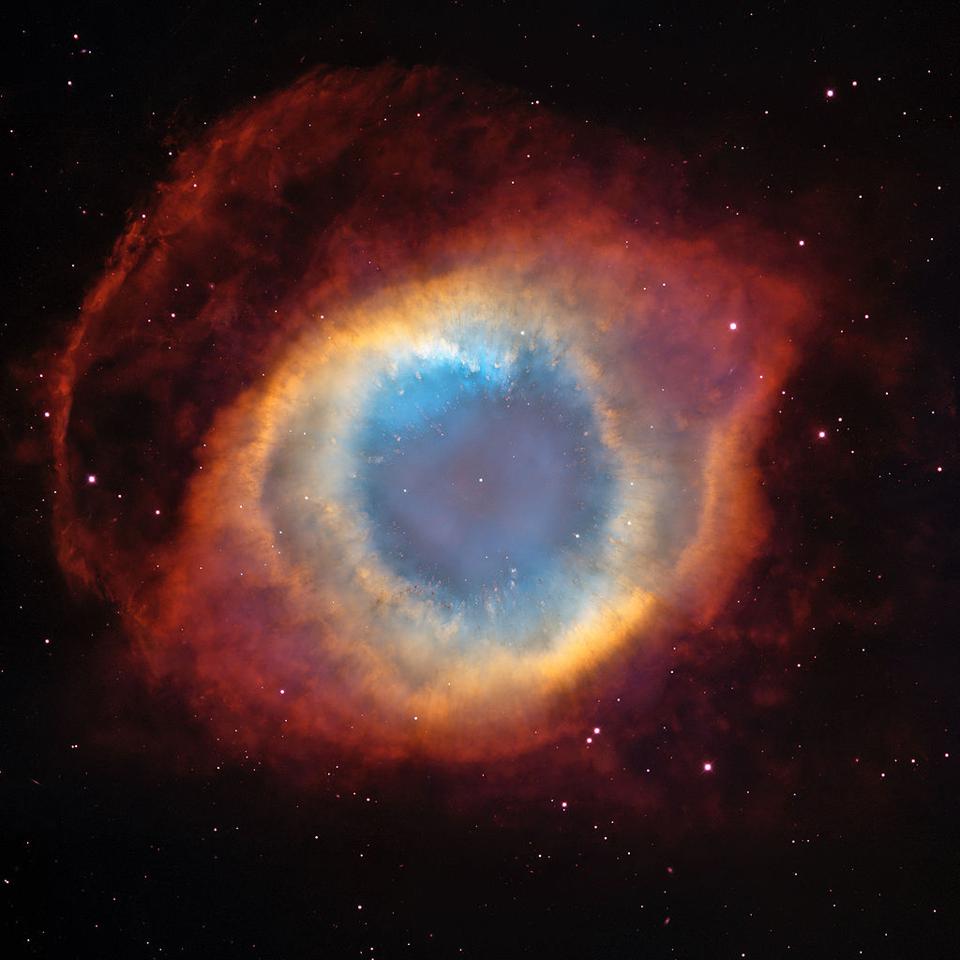
This photograph of the Helix Nebula shows the typical combination of a planetary nebula and a white dwarf: it is the end of the life cycle of a sun-like star. The central white dwarf is much fainter than an ordinary star, but is very hot and emits ionizing radiation. The nebula illuminated by it consists of the outer layers of the star ejected outward.
Such stellar remnants persist for about 20,000 years, slowly and gradually changing.
However, the Skat Nebula , which Hubble observed for 20 years, turned out to be special.

The animation shows how much the Stingray Nebula has dimmed since 1996. Pay attention to the star in the background, to the upper left of the central dying white dwarf - its brightness does not change over time. This confirms that it is the nebula itself that is dimming significantly.
At first it faded considerably, becoming much less bright.

A common planetary nebula looks similar to the Cat's Eye Nebula in this photo. The central regions of the expanding gas are illuminated by the central white dwarf, while the rarefied outer regions continue to expand, much less illuminated.
Then the shells of gas shrank and became more rarefied, so they are no longer visible so clearly.

The Dumbbell Nebula , pictured through an amateur telescope 8 ". This is the first of the discovered planetary nebulae - it was discovered by Charles Messier in 1764. Gas envelopes are slowly expanding, but still visible - this is typical of planetary nebulae.
Such changes are unprecedented. The clues to their behavior are indications of the presence of various chemical elements in the system.

X-ray observatory "Chandra" has built maps of the presence of various elements in supernova remnants of Cassiopeia A... Red - silicon, yellow - sulfur, green - calcium, purple - iron. Each element has a special spectrum shape and a set of photometric radiation.
The emissions of nitrogen and hydrogen in the nebula have significantly decreased, while the emissions of oxygen have increased dramatically, increasing almost a thousand times.
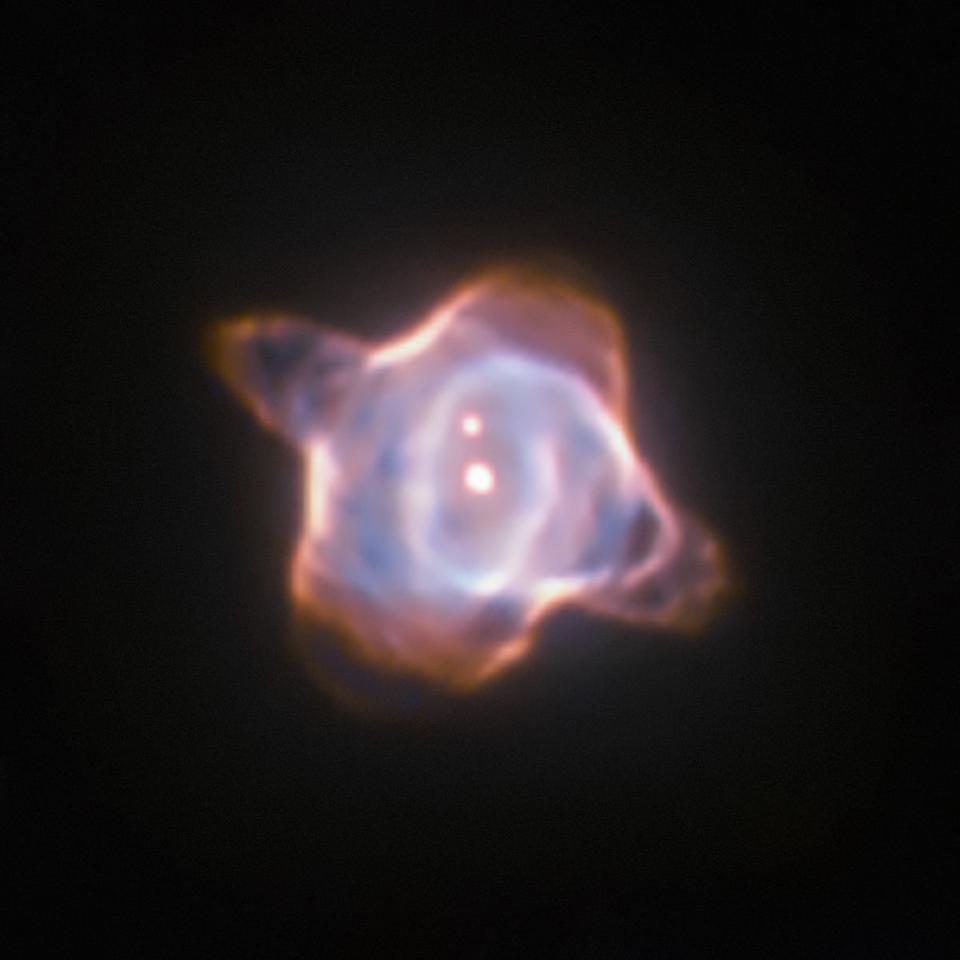
Best resolution possible: The 2016 Hubble image of the Stingray Nebula. It can be seen that the nebula has become less bright and less clear compared to previous images. The star has become significantly colder compared to its peak of 60,000 K, to which it gradually went from the 1970s to 2000. Since then, her temperature has dropped.
All this is due to a change in the temperature of the central star: it used to grow from 22,000 K to 60,000 K, and now it is rapidly falling.
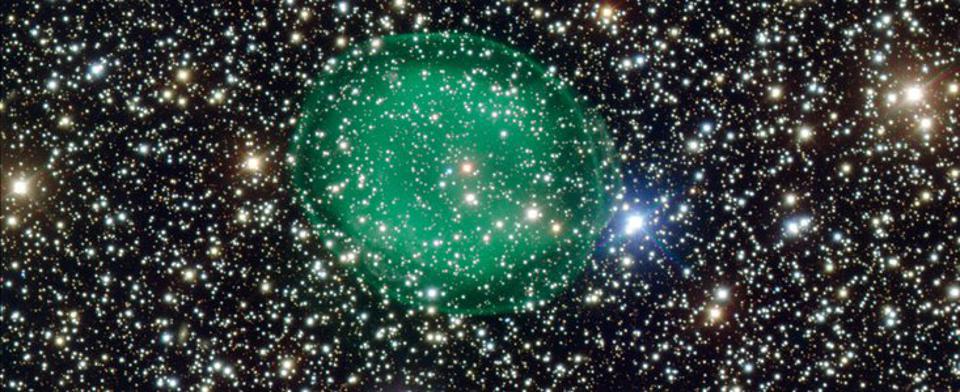
This image from Europe's Very Large Telescope shows the glowing green planetary nebula IC 1295 surrounding a faint dying star. The star is located at a distance of 3,300 light years from us. The green color of the nebula is given by the transitions of emission lines in the ionized gas that surrounds the faint dying star. Green light usually appears in the presence of doubly ionized oxygen, which requires temperatures of at least 50,000 K.
At 50,000 K oxygen loses two electrons, becomes doubly ionized, and emits emerald green light.

An asymptotic giant branch starLL Pegasus with its ejections, and a sectional diagram of the star's core. The carbon-oxygen core is surrounded by a shell of helium, the synthesis of which can occur at the border with the core. The remains of the Skat Nebula have probably been warmed up recently by a brief helium fusion - although the outer layers of the star, containing hydrogen and helium, have been largely ejected. Now the star is fading.
This hints at a recent spike in fusion - the helium in the shell surrounding the core caught fire and illuminated the surrounding gas.
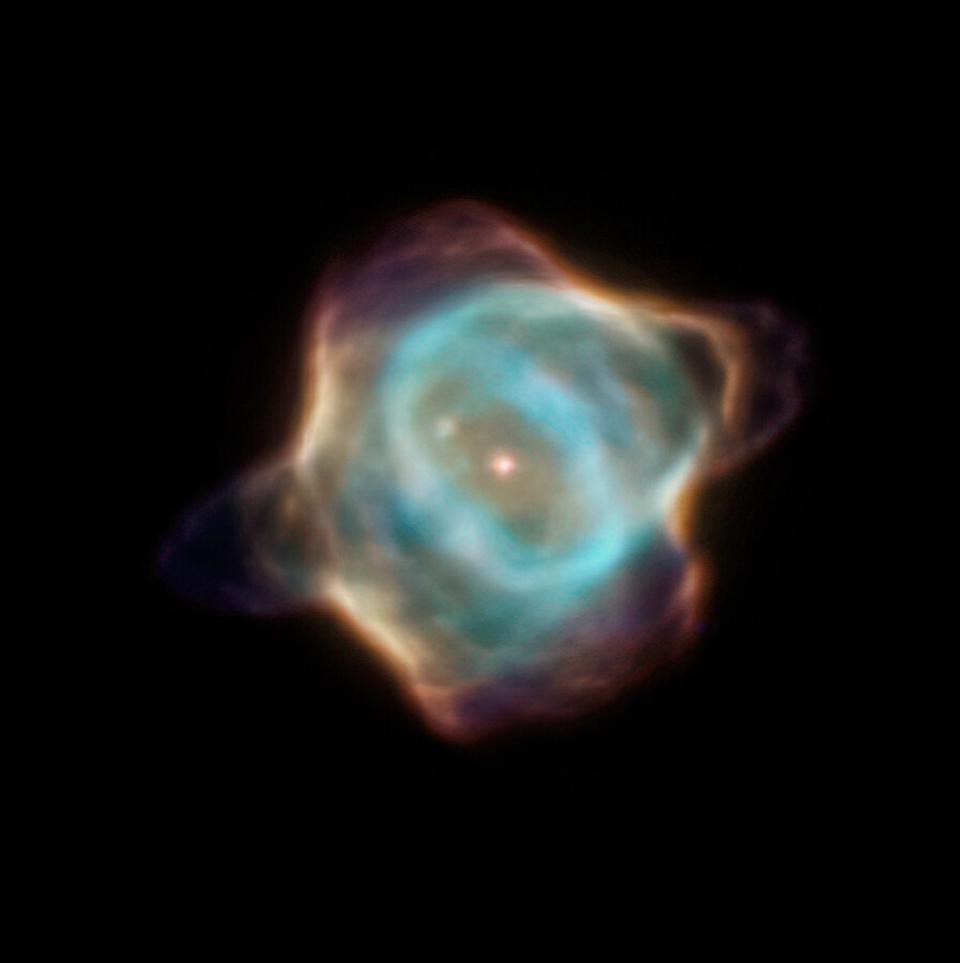
Originally closer to the center of the Stingray Nebula, Hen 3-1357, bright blue envelopes existed, as shown in this 1996 photo. She was considered the youngest of all discovered nebulae. But given how much it has tarnished lately, this assumption could be horribly wrong.
When the burst ended, the nebula began to fade as the central part cooled.
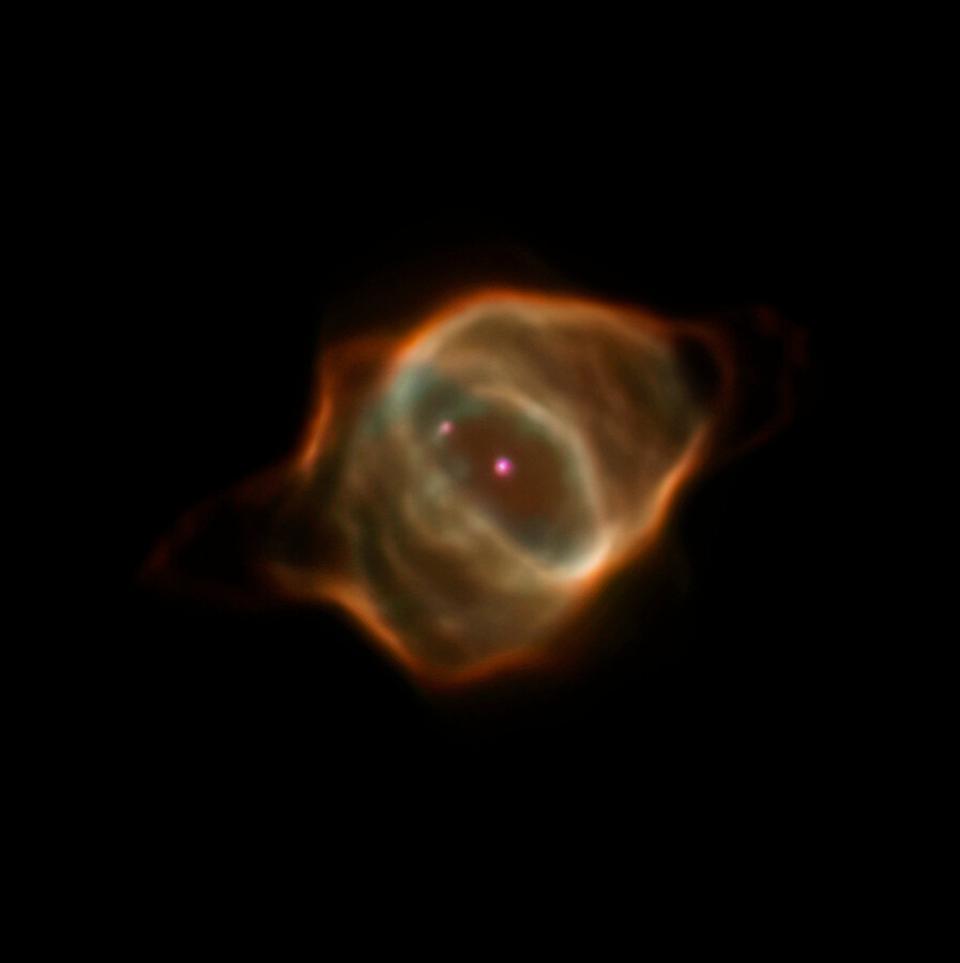
The Stingray Nebula has dramatically faded, as seen in this 2016 photo. It became less bright and changed its shape. Oxygen emissions dropped most noticeably. The nebula no longer stands out so strongly against the background of empty space.
In addition, the gas in the nebula does not expand, but contracts - this has not been observed before.

The Medusa Nebula shown heredull, scattered and complex. These are all signs of her venerable age. Nebulae have been around for 10 to 20 thousand years, and this one is obviously approaching the end of life. Once the gas is neutral or too diffuse to glow, and the white dwarf in the center cools, the nebula disappears completely from view.
It is possible that this nebula will completely disappear in 20-30 years - and this will be the first such case in the history of observations.

On a smaller scale, it is no longer clear where the Stingray Nebula is. But if you look closer, you will see that it is located in the central blue star. If the current trend continues, the nebula will completely disappear in 20-30 years.